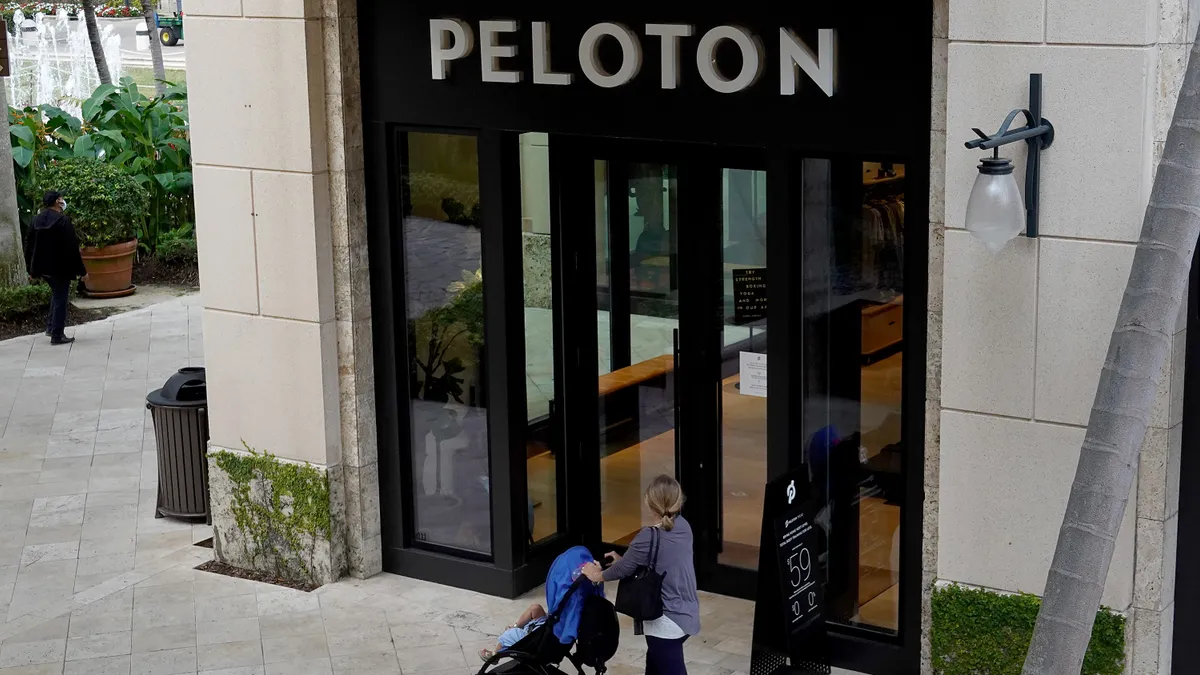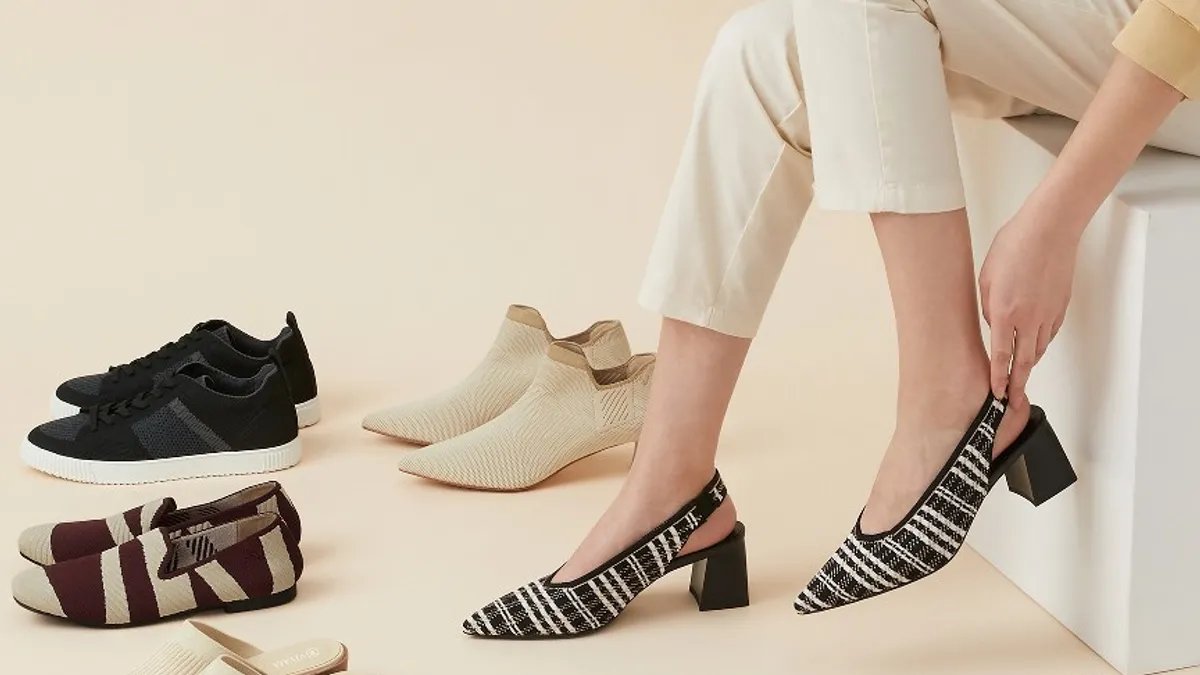Holiday shopping used to mean driving to stores. Then it meant hopping on the information superhighway. And now it means going mobile.
For the first time ever, mobile devices will eclipse desktops in digital shopping visits this holiday season, vaulting ahead by a margin of 53% to 47%, according to Adobe’s 2016 Digital Insights Shopping Predictions report. That’s because American consumers are shopping virtually everywhere — in the bed, the bath and even beyond. A PayPal holiday buying survey found 34% of respondents will shop in bed for their partner or spouse while sleeping next to them, 22% confessed they will shop on the toilet and 35% admitted they will even shop at the Thanksgiving dinner table in order to capitalize on a killer deal.
That’s the good news. Now for the bad.
Mobile shoppers will account for just 34% of e-commerce sales during the holidays, a stunning 19% gap between visits and purchases, Adobe notes. In fact, despite mobile traffic growth, overall online sales revenue increased by only 10% this shopping year, with desktop and tablet revenues both actually declining by 2%. Even so, at $155, the average order value on desktops outstrips smartphones by $35 per order, while average revenue-per-visit on smartphones languishes 3.6 times lower than on desktop. Overall, desktops still drive 75% of year-round total digital revenue while accounting for 59% of traffic, compared to smartphones at 16% of total revenue and 32% of traffic.
Blame poor mobile shopping experiences, Adobe says. While 30% of all shopping carts lead to orders on desktop, the number plunges to 19% of carts on smartphones, indicating that consumers are running into significant obstacles on mobile sites. Survey data indicates that 60% of consumers find smartphones less practical for finding items than on desktops, with 30% citing easier navigation of pages and 26% pointing to improved image quality on a bigger screen as the primary reasons for switching to desktop from mobile to complete a purchase.
“The shopping cart is a critical page to convert shoppers, but the experience has not been optimized on mobile and it has left many users to either buy less or abandon their carts completely,” Adobe Digital Insights principal analyst Tamara Gaffney said in a statement.
Improving the shopping cart is just one facet of an enhanced mobile shopping experience, experts say.
“Mobile keeps radically accelerating its momentum,” Alan Knitowski, CEO of mobile application development platform Phunware, told Retail Dive. “It’s time for retailers to get serious about mobile, stop joking about it and do it right.”
Getting out of the web
Doing it right starts with steering consumers away from the mobile web and into mobile applications. Purchases made via mobile browsers are currently more common than transactions completed in merchants’ native apps, according to a recent Javelin Strategy & Research study: Transactions via mobile browsers in 2015 totaled $75.3 billion, while apps accounted for $46.9 billion.
Javelin blames the discrepancy on retailers’ failure to differentiate the app shopping experience from the browser, giving smartphone users little incentive to download or open an app. Even apps that are installed struggle to retain consumers, Adobe notes, stating that 60% of retail apps are used fewer than 10 times, a higher abandonment rate than apps in other industry verticals like healthcare, financial services and media and entertainment.
During this holiday season, 60% of consumers plan on using mobile browsers instead of apps for shopping, Adobe adds. But apps can offer them a far richer experience, encompassing bells and whistles ranging from push notifications and alerts to more advanced features like augmented and virtual reality tools enabling shoppers to preview furniture purchases in their homes or “try on” apparel and accessories.
Not many retailers are capitalizing on these innovations, however. “Retail suffers because it does not want to learn the lessons of media and entertainment, or sports, or pure internet companies,” Knitowski said. “When you see the millions of dollars being spent in other verticals, it’s really embarrassing to see how bad retail application experiences are. I couldn’t even point you to one I would say is good.”
But that’s changing, says Supriya Chaudhury, chief marketing officer at e-commerce analytics firm Clavis Insight.
“Retailers are starting to think about how they can use mobile to complement the customer experience,” Chaudhury told Retail Dive. “Look at Kohl’s. They’re trying to create this seamless online/offline shopping experience. Consumers get the offers they want in [the Kohl’s] app — I can shop at office or wherever I am, and that influences me to buy something there and then. It also drives awareness of these deals, and becomes a hook to pull me into the physical store. Then I can use the app in the store to scan a barcode to determine the final cost once the discount is applied. [Kohl’s is] basically saying ‘We know people use their mobile phones in different ways, and we know they’re going to be actively using their phones while in the store. Let’s think about it as a seamless integration, and not make them separate transactions.’”
Retailers are still missing out on a multitude of other mobile opportunities, Chaudhury admits. “We haven’t seen any major retailers tracking where you are and making specific offers based on your physical location. I don’t want to try to buy something and find that it’s out of stock. That’s a very unhappy shopping experience. If location-based offers reflect what [stores] have in stock and are specific to those general zip code areas, that’s obviously incredibly important,” she said. “I also feel like retailers haven’t gone anywhere much with [beacon technology], to leverage it in stores to make the shopping experience better and more productive. That’s another opportunity waiting to happen.”
Shifting the customer experience from the mobile browser to apps also enables retailers to boost their personalization efforts, Knitowski says, suggesting that merchants should leverage data collected via loyalty programs, branded credit cards and other initiatives to deliver more customized mobile experiences.
“Retailers need to focus on every single shopper on a one-to-one basis to give them what they want, when they want it, wherever they’re at, whether they choose to come to a store, shop on a website or buy in an app,” Knitowski said. “We recommend getting access to [customer] data to do better targeting, to get more conversions and to make more money instore, online and in app. Then, drop [a software development kit] in, so that you can have location-based services on one side and marketing automation on another, so that you can instantaneously know when people are remote or onsite, so you can give them what they want when they want it.”
Differences on devices
Mobile marketing isn’t only about knowing where shoppers are and what they’re doing. It’s also about recognizing what kind of mobile device they carry.
A recent study conducted by mobile advertising attribution and marketing analytics platform AppsFlyer identified distinct differences in shopping behaviors between Apple iOS and Google Android device users: For starters, iOS users complete most of their shopping by Cyber Monday, with in-app holiday purchase activity plunging 38% after late November, while Android users tend to procrastinate and wrap up their shopping last-minute, with in-app purchases spiking 24% during Christmas week.
“Q4 is the busiest time of the year, when consumers engage most with apps,” Jasper Radeke, AppsFlyer’s North American director of marketing, told Retail Dive. “We knew already from previous reports on purchase volume and average shopping cart size that iOS users spend significantly more, but now we also know when the shopping is happening. The mobile ecosystem is changing expectations when it comes to immediacy, and changing the boundaries of when you need to get your shopping done.”
AppsFlyer urges retailers to run mobile app user acquisition campaigns in the weeks leading up to late November to fully exploit sales possibilities: Not only is it vital for consumers to install merchant apps ahead of holiday season, but the more lead time that retailers have to properly onboard new users, the more they can learn about them. Retailers also should take into account differences in peak shopping periods on iOS and Android to get the most mileage out of customer engagement efforts across both operating systems, whether reaching out to shoppers via paid app retargeting, push messaging or email.
“Shopping doesn’t always happen immediately,” Radeke said. “You need time to familiarize yourself with an app, build trust, and then understand ‘This is the app that I’m going to use, either because of a retargeting campaign or because it’s the time of the season when I want to go shopping.’ At the same time, there seems to be a lot of potential around Christmas to engage last-minute shoppers. If you have a retail app that supports that — with [merchandise] that can be delivered within hours or days — you can capitalize.”
Now is the time to target those shoppers. Adobe projects that Thanksgiving Day and Christmas will represent the biggest mobile retail days of the year, accounting for 59% and 66% of shopper traffic, respectively. In addition, mobile will drive 49% of Cyber Monday visits, up 10% year over year. And it's only going to grow.
“We’re very, very bullish on mobile,” said Clavis Insight’s Chaudhury. “Whatever happens this holiday season, it’s going to be a bigger and bigger piece of commerce in the years ahead.”
This story is part of our ongoing coverage of the 2016 holiday shopping season. You can browse our holiday page for more stories.




















